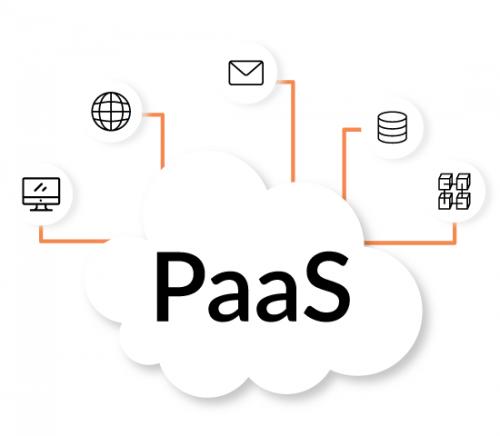PaaS - What is it, How Does it Work and Who Needs it?

The PaaS model is becoming an increasingly widespread trend in the modern IT industry. It has had a big impact on software development, making it easier, faster, and more accessible for large corporations and small “garage” startups or individual developers.
Therefore, we decided to talk in detail and clearly about PaaS in our new article. Here, you will learn about how this system works, its advantages and opportunities, in what areas it can be used, and the current situation in the PaaS services market.
What is PaaS? What is included?
Paas (Platform as a Service) is a cloud service model in which the provider provides customers with a cloud complex of technical and software resources to deploy any software on it. Thus, small companies and groups of IT specialists receive a ready-to-work infrastructure to develop, implement, integrate, and manage any kind of software: desktop, browser, or mobile.
The main feature of PaaS is the presence of a single platform that combines all the necessary hardware and software resources on an all-inclusive basis. In the past, software developers had to buy, rent or otherwise acquire these resources separately and then configure them to buy, rent, or otherwise acquire them individually and then configure them to interact effectively. Moreover, tool vendors had different requirements for operating, integrating, and licensing their products, which further complicated preparing and using a software environment.
What tasks is the PaaS model suitable for?
Software development
Most often, such a platform is used to develop and manage software. It allows you to quickly and conveniently create software based on ready-to-use components with extensive scalability and multi-user support. Thus, the development and operation of the project will require much less time and resources than when starting from scratch. PaaS is ideal for building microservices, APIs, and other similar IT products for the same reasons.
Analytics and business management
PaaS providers often provide customers with tools for analyzing business data. With their help, they can plan their activities more effectively, predict key indicators and find promising business models. Also, as part of the PaaS model, it is possible to rent full-fledged business management platforms, such as industry-specific CRM solutions, to automate certain business processes.
Communications
The modern Platform as a Service model is unthinkable without a complete set of communication tools that simplify and speed up communication within the team and with clients. These include such popular options as internal chat, customer support chat, email services, audio-video call modules, etc.
Databases, Internet of things, security, etc.
The capabilities of modern PaaS providers allow them to deploy any IT infrastructure on their resources successfully. For example, remote databases of any scale, tools for the Internet of things, options for remote control and management of security systems, etc.
Benefits of Platform as a Service systems
It is not for nothing that PaaS is considered the most suitable model for developing small and medium-sized IT products. It has become widespread due to a number of its advantages, namely:
Cost optimization: Having several ready-made components (from workflows and directory services to search tools and security systems) allows you not to waste time and other resources developing and implementing them from scratch.
Capacity building. Using a PaaS platform, you can change and scale your product and add new features to it without hiring additional specialists and a corresponding increase in costs.
Data portability: Modern PaaS solutions support a multi-cloud strategy that allows you to quickly and without restrictions transfer data between different storage sources, for example, from a local server to a cloud and vice versa, from a private cloud to a public one, etc. Also, convenient data backup and other functions for processing and managing them are available here.
A single environment for all stages of product development: The PaaS model provides all life cycles of an IT product within a single integrated environment: development, testing, deployment, external integration, management, updating, etc. Providers provide a comprehensive infrastructure for every aspect of creating and maintaining a product, including programming, design, databases, customer support, and more.
Ease of teamwork: PaaS providers offer a wide range of tools for rapid communication and collaboration of IT teams. This model is incredibly convenient when working remotely when team members are located in different geographic locations and time zones. Equally important here is the option to synchronize data and changes made.
Conclusion
PaaS is a type of service in which the provider provides customers with its technical and software infrastructure for the development, support, and management of IT products. Modern PaaS platforms help optimize costs, easily change and scale the product and share data.
They offer a single integrated environment for teamwork on a product and allow customers to take ready-made software elements rather than creating and implementing them from scratch. PaaS solutions are optimally suited for developing and maintaining IT products of any scale and direction: software development, analytics, business management, security systems, communications, databases, etc.
Post Your Ad Here
Comments